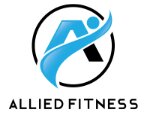Posture is a word we use a lot, but do we actually know what it means and why it is so important?
Firstly, we need to recognise that everyone is different, which means the definition of optimal posture will differ. However, the principles of a good posture will always remain the same. When we hear the word posture we puff our chest out and sit up tall….is this the definition of good posture? Not exactly, posture involves more than walking around stiff like a plank of wood.
The reason why posture is important is because it allows our structures (bones) to load optimally and keeps our musculature in equilibrium (steady state). Poor posture means unnecessary joint loading and activation of muscles, this leads to gradual onset of fatigue and injury.
So how do we adopt good postures? Start at your hips, then work up and work down. Posture doesn’t just mean your spine, it means your hips, shoulders, knees and ankles.
The Hips:
Your hip angle will control your lumbar arch, which will control your function and pain levels. So, it’s all in the hips. Control your hip angle through retraining its range of motion and also the strength of antagonist and agonist muscles. 70% of the population have excessive lumbar lordosis meaning the core is not activated, the hamstrings are tight, the paraspinals and hip flexors are overloaded. The solution is simple, retrain these 4 muscles groups.
The Shoulders:
Shoulder protraction is the problem, a lot of the movement we perform are in a forward plane, therefore our body compensates. The result is thoracic kyphosis, or in simple terms a hunchback. The solution is simple, focus on the scapular and how it interacts with the surrounding musculature.
The Neck:
The neck is becoming more and more problematic with the revolution of technology. The good old neck poke to view the tiny smart phone screen on the train. There are two ways to fix cervical posture, the first is changing how we interact with technology by setting screen heights and lengths at an optimal viewing distance. The second is taking into consideration the action/reaction principle, we simply need to do neck tuck repetitions to counteract the movement bias.
The Knees:
Knee posture is an easy one, and if we get the knees right we often get the ankles right, yet we still get it wrong. To avoid patella tracking, keep the knees over the toes.
The Ankles:
The duck or the waddle, which one are you? Just like your knees, if you get your ankles right you get your knees right. Its best to be direct with this, keep your feet straight! Sounds straight forward, but sit down in a public place and watch people walk and you will be shocked at the amount of poor ankle posture in Australia.
If you want to observe a perfect posture, go and take a look at your children. They aren’t old enough to have learnt lazy habits, so they posture and move how we are designed to move.
The right exercise prescription can help you fix your posture, which will improve your quality of life and performance. An Exercise Physiologist is tertiary trained to retrain and restore optimal movement patterns, so skip the PT line and join the EP line.
